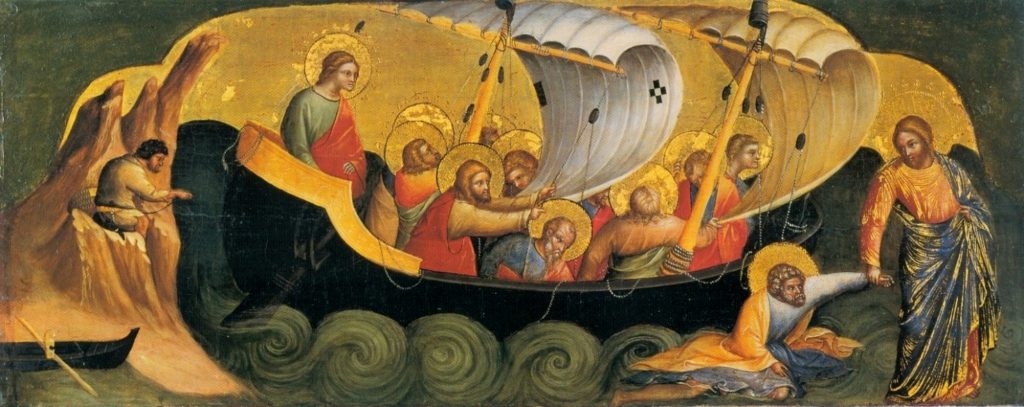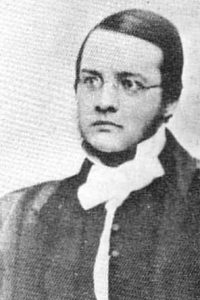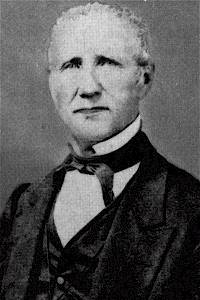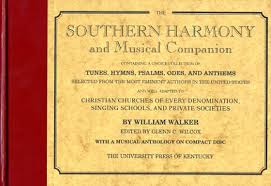 Lorenzo Veneziano, Christ Saving St. Peter
Lorenzo Veneziano, Christ Saving St. Peter
Mount Calvary Church
A Roman Catholic Congregation of
The Personal Ordinariate of the Chair of St. Peter
Anglican Use
Trinity IX
Hymns
Eternal Father, strong to save.
What wondrous love
From all that dwell below the skies
___________________________
Eternal Father, strong to save. The first three stanzas of this hymn by William Whiting (1825—1878) appeal to the Trinity with Scripture passages wherein each Person controlled the sea, imploring “O hear us when we cry to Thee for those in peril on the sea.” The first stanza refers to God’s discourse with Job, in which the Lord asks “Or who shut in the sea with doors when it burst out from the womb, when I … said, ‘Thus far shall you come, and no farther, and here shall your proud waves be stayed’?” (Job 38:8, 11) The second stanza refers to two occasions when Jesus calmed the raging sea: when He walked on the water (Mark 6:45-52), and when He slept through a storm until His terrified disciples woke Him (Mark 4:35-41). The third stanza alludes to Creation, when “The earth was without form and void, and darkness was over the face of the deep. And the Spirit of God was hovering over the face of the waters.” (Genesis 1:2 ) The final stanza summarizes the hymn and promises continued praise “from land and sea.”
1 Eternal Father, strong to save,
Whose arm does bind the restless wave,
Who bids the mighty ocean deep
Its own appointed limits keep;
O hear us when we cry to Thee
For those in peril on the sea.2 O Savior, whose almighty word
The winds and waves submissive heard,
Who walked upon the foaming deep,
And calm amid the rage did sleep;
O hear us when we cry to Thee
For those in peril on the sea.3 O Holy Spirit, who did brood
Upon the waters dark and rude,
And bid their angry tumult cease,
And give for wild confusion peace;
O hear us when we cry to Thee
For those in peril on the sea.4 O Trinity of love and pow’r,
Your children shield in danger’s hour;
From rock and tempest, fire, and foe,
Protect them where-so-e’er they go;
Thus, evermore shall rise to Thee
Glad hymns of praise from land and sea.
Here are (most appropriately) the Navy Sea Chanters. Here it is sung in Portsmouth, England. 
William Whiting
William Whiting was born in 1825 in London. He was educated in Chapham and at King Alfred’s College in Winchester. He became master of Winchester College Choristers’ School in 1842, where he remained for 36 years until his death. He wrote numerous volumes of poetry and contributed hymns to various collections. His works include Rural Thoughts and Scenes, 1851 and Edgar Thorpe, or the Warfare of Life, 1867. He is best known for his hymn “Eternal Father, Strong to Save.”
____________________
What wondrous love is an American folk hymn, as its repetitions evidence, from the Second Great Awakening. This hymn articulates the question that Christians ask every day: what did I do to deserve such a wonderful love from God and from Christ? The hymn is an offering of thanks to the Son for laying aside his crown as King and humbling himself even unto death. Jesus took on the sin and shame of man and thereby became the Lamb who was slain to save us from our sins. Jesus is not only the Lamb, but he is I AM, Lord and God. Our response is endless praise, and forever we shall marvel and ask, “What wondrous Love?”
What wondrous love is this, O my soul, O my soul!
What wondrous love is this, O my soul!
What wondrous love is this that caused the Lord of bliss
to bear the dreadful curse for my soul, for my soul,
to bear the dreadful curse for my soul?When I was sinking down, sinking down, sinking down,
when I was sinking down, sinking down;
when I was sinking down beneath God’s righteous frown,
Christ laid aside his crown for my soul, for my soul,
Christ laid aside his crown for my soul.To God and to the Lamb, I will sing, I will sing,
to God and to the Lamb, I will sing;
to God and to the Lamb who is the great I AM –
while millions join the theme, I will sing, I will sing;
while millions join the theme, I will sing.And when from death I’m free, I’ll sing on, I’ll sing on,
and when from death I’m free, I’ll sing on;
and when from death I’m free, I’ll sing and joyful be,
and through eternity, I’ll sing on, I’ll sing on,
and through eternity I’ll sing on.
As a folk hymn the exact history of What wondrous love is not entirely clear. It is sometimes described as a “white spiritual”, from the American South.
The hymn’s lyrics were first published in Lynchburg, Virginia in the c. 1811 camp meeting songbook A General Selection of the Newest and Most Admired Hymns and Spiritual Songs Now in Use. The lyrics may also have been printed, in a slightly different form, in the 1811 book Hymns and Spiritual Songs, Original and Selected, published in Lexington, Kentucky. (It was included in the third edition of this text published in 1818, but all copies of the first edition have been lost.) In most early printings, the hymn’s text was attributed to an anonymous author, though the 1848 hymnal The Hesperian Harp attributes the text to a Methodist pastor from Oxford, Georgia, named Alexander Means.
The tune was discovered by composer William Walker on his journey through the Appalachian region of America. Though the tune had been around for many years, it was passed on by rote, and not written down. Walker decided in 1835 that he would change that, and added the hymn to his collection Southern Harmony. The Appalachian region is well known for having many Irish and Scottish immigrants, which is shown in the hymns haunting text and minor tune. The hymn is written in a way that made it easy to pass on from generation to generation, repetition of lyrics. The hymn was written in the early 1800’s, a time when hymnals were scarce and music was rarely written down. To make it easier for people to learn hymns (Especially in the time of the Second Great Awakening), the author would often times write the same lyrics over and over again to drive home the point, while still keeping the text simple and easy to learn.
The hymn is sung in Dorian mode, giving it a haunting quality. Though The Southern Harmony and many later hymnals incorrectly notated the song in Aeolian mode (natural minor), even congregations singing from these hymnals generally sang in Dorian mode by spontaneously raising the sixth note a half step wherever it appeared. Twentieth-century hymnals generally present the hymn in Dorian mode, or sometimes in Aeolian mode but with a raised sixth. The hymn has an unusual meter of 6-6-6-3-6-6-6-6-6-3. The meter of “What Wondrous Love” derives from an old English ballad about the infamous pirate Captain Kidd:
My name was Robert Kidd, when I sailed, when I sailed;
My name was Robert Kidd, when I sailed;
My name was Robert Kidd, God’s laws I did forbid,
So wickedly I did when I sailed, when I sailed
So wickedly I did when I sailed.
(His real name was William; Americans erroneously called him Robert.)
A popular style of singing during this time was Shape Note Singing, which is a form of singing that uses shapes to denote which pitch should be sung, instead of the traditional European notation that we find in most music now-a-days. In order for the shape note singing to be done correctly, the congregation would be divided into four different sections, and each section was given a different part to sing. This was easier for people to sing, because most people during that time had no idea how to read music, and Shape Note Singing was a way to take something like music and give it to everyone, even the unlearned. The repetitious lyrics also made the text easy to remember.
William Walker (1809-1875)
William Walker was born in Martin Mills, South Carolina in 1807 and grew up just outside of Spartanburg, where, in order to distinguish the difference between himself and other William Walkers, he was nicknamed “Singing Billy.” in 1835 he published a collection of four-shape Shape Note tune books entitled Southern Harmony. This was used for many years and was revised several different times, the final of which was printed in 1854 and is still used today in Kentucky at several different camp meetings. In 1846 Walker published another tune book that was supposed to be used as an index to Southern Harmony. The Publication was entitled The Southern and Western Pocket Harmonist, which contained several different camp meeting tunes. in 1867 Walker published another tune book entitled Christian Harmony where he adopted a new shape notation that contained seven different shapes instead of the traditional four shapes. Christian Harmony shared many similarities with Southern Harmony, but the biggest difference of note was the addition of the Alto harmony in tunes that previously did not contain that particular harmony. William Walker lived a long life, and finally passed away in Spartanburg, South Carolina in 1875. He has an infamy that continues still today with the singing of traditional Shape Note tunes at conventions around the country and especially groups such as the Sacred Harp Singers Of Georgia and Alabama.
In 1952, American composer and musicologist Charles F. Bryan included What Wondrous Love Is This in his folk opera Singin’ Billy, loosely based on Walker’s life as a singing school teacher. In 1958, American composer Samuel Barber composed Wondrous Love: Variations on a Shape Note Hymn (Op. 34), a work for organ, for Christ Episcopal Church in Grosse Pointe, Michigan; the church’s organist, an associate of Barber’s, had requested a piece for the dedication ceremony of the church’s new organ. The piece begins with a statement that closely follows the traditional hymn; four variations follow, of which the last is the “longest and most expressive.” Here is a performance. In 1966, the United Methodist Book of Hymns became the first standard hymnal to incorporate What Wondrous Love.
Here is the St. Olaf choir singing What Wondrous Love. Here is a shape note choir singing the hymn at Berea College. The Germans have taken up shape note singing. Here is a chamber setting for piano and viola and variations for solo violin.
___________________
From all that dwell below the skies is a metrical paraphrase of Psalm 117, the shortest psalm in the Bible: “O praise the Lord, all ye nations: praise him, all ye people. For his merciful kindness is great toward us: and the truth of the Lord endureth for ever. Praise ye the Lord.” Isaac Watts (1674—1748), the first important composer of hymns in English, told his father that even though the psalms were the word of God they did not share the message of salvation in Christ, so in his paraphrases he made the deeper Christian meaning of the Psalms explicit. This hymn first appeared in Watts’ Psalms of David Imitated, in the Language of the New Testament (1719). Watts considered this, his last poetical collection, his greatest work. He devoted years of diligent effort to its completion and incorporated into it the evangelical vision already suggested in his earlier poems: “Christ and His cross is all our theme.” Watts recognized how radical his work would appear to English Christians who, since the Reformation, had generally favored church use of nothing but Psalms. In Psalms of David, Watts set out to accommodate the Book of Psalms to Christian worship, making imaginative applications of David’s expressions to Christian experience.
1 From all that dwell below the skies;
Let the Creator’s praise arise;
Let the Redeemer’s name be sung,
Through every land by every tongue.2 Eternal are Thy mercies, Lord,
Eternal truth attends Thy Word;
Thy praise shall sound from shore to shore,
Till suns rise and set no more.3 Praise God, from whom all blessings flow;
Praise Him, all creatures here below;
Praise Him above, you heavenly host;
Praise Father, Son, and Holy Ghost. Amen.
Here is the Mormon Tabernacle Choir’s version.

